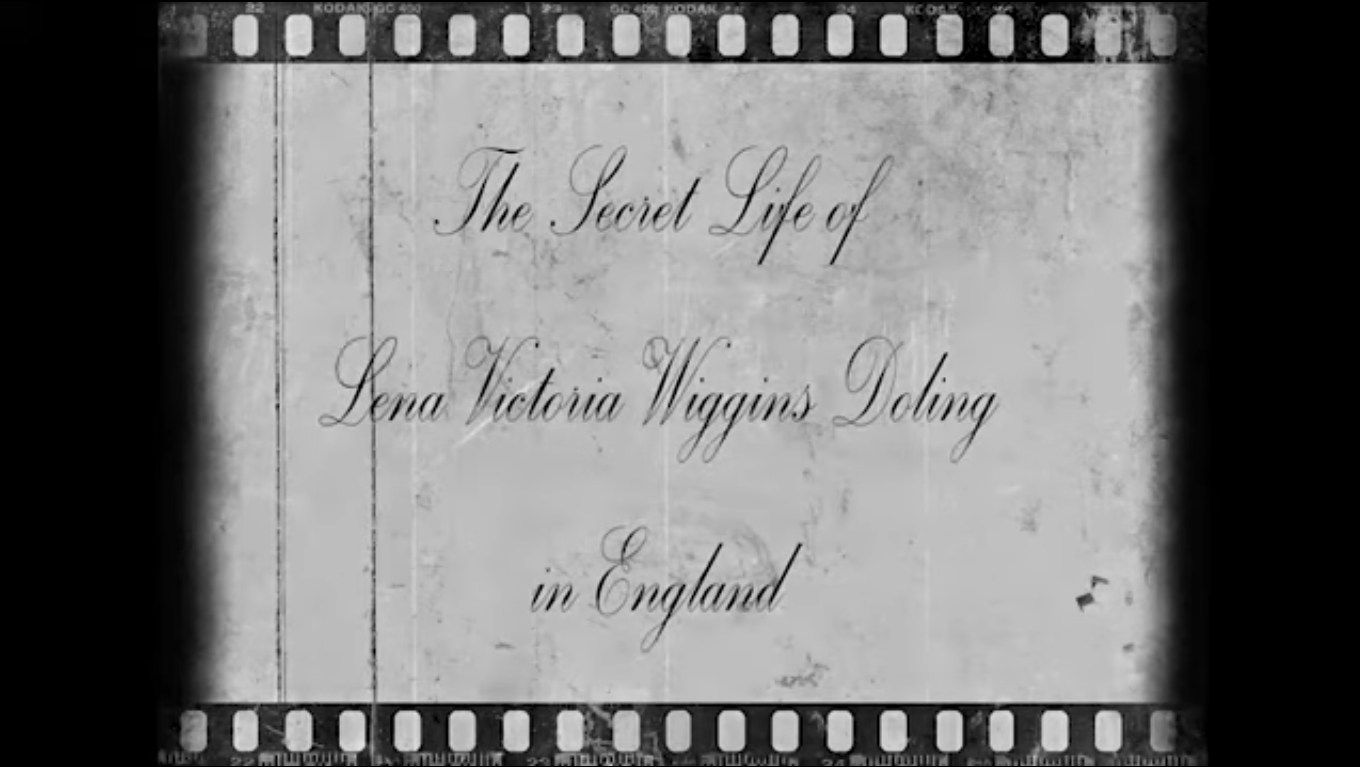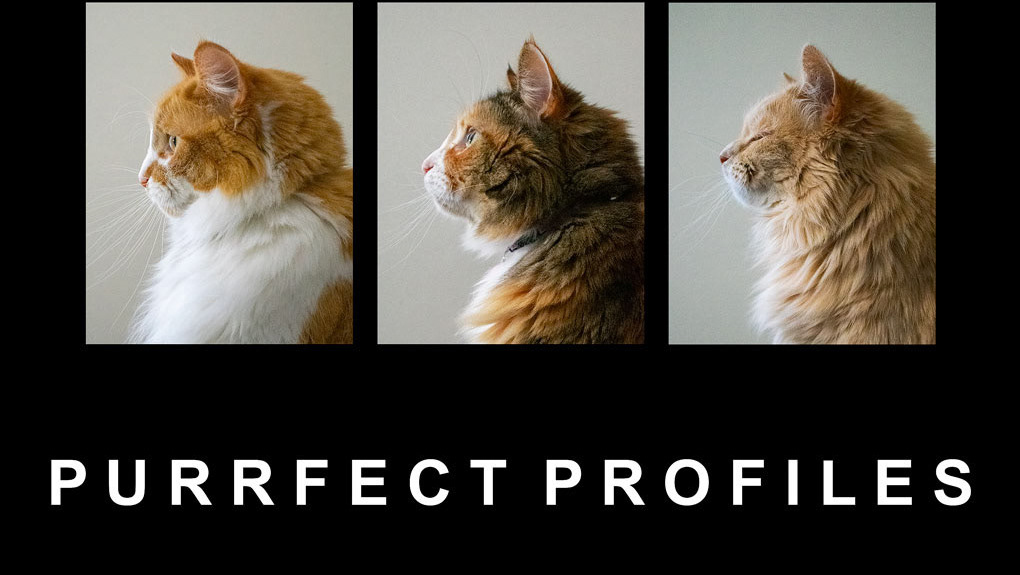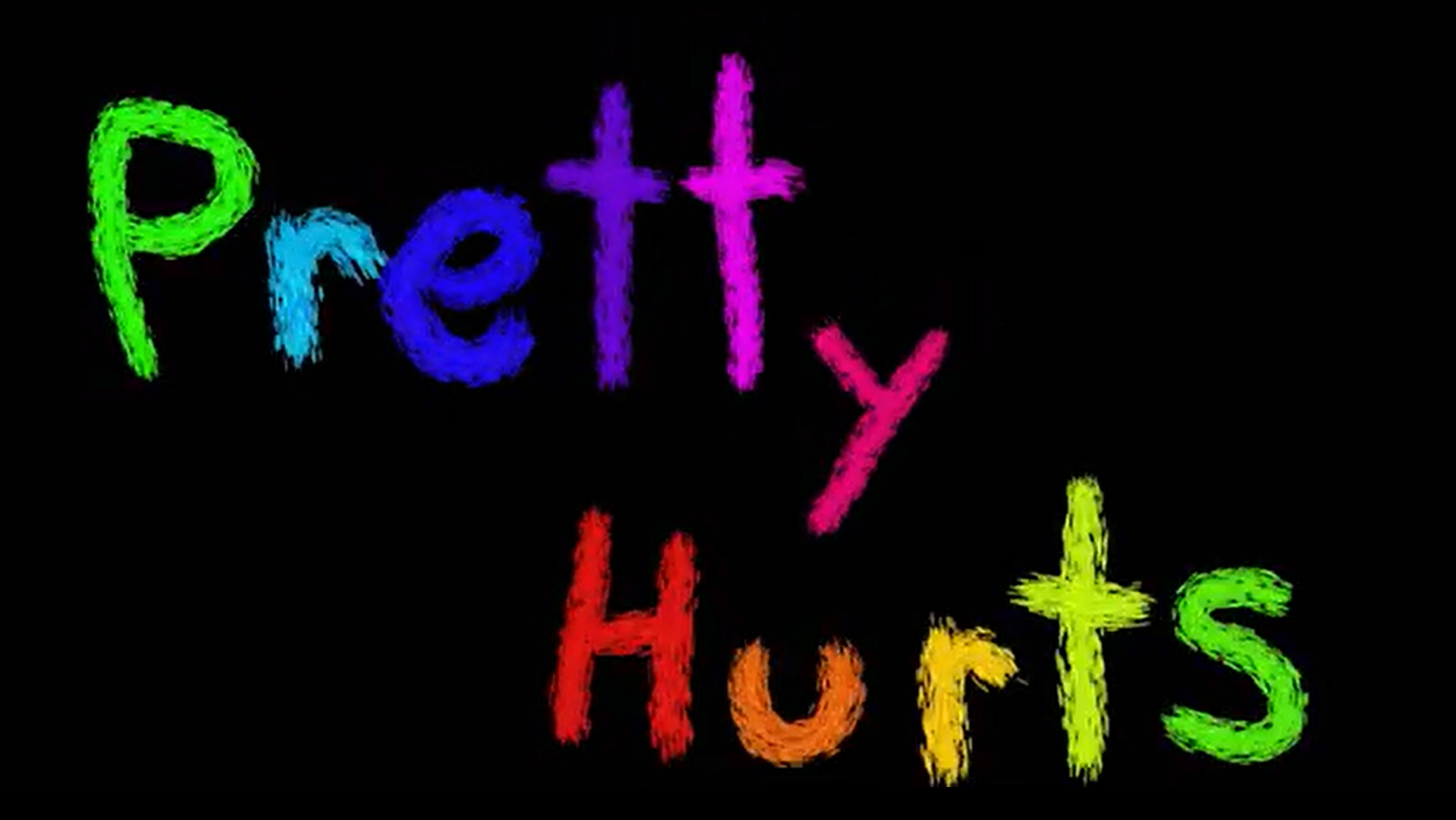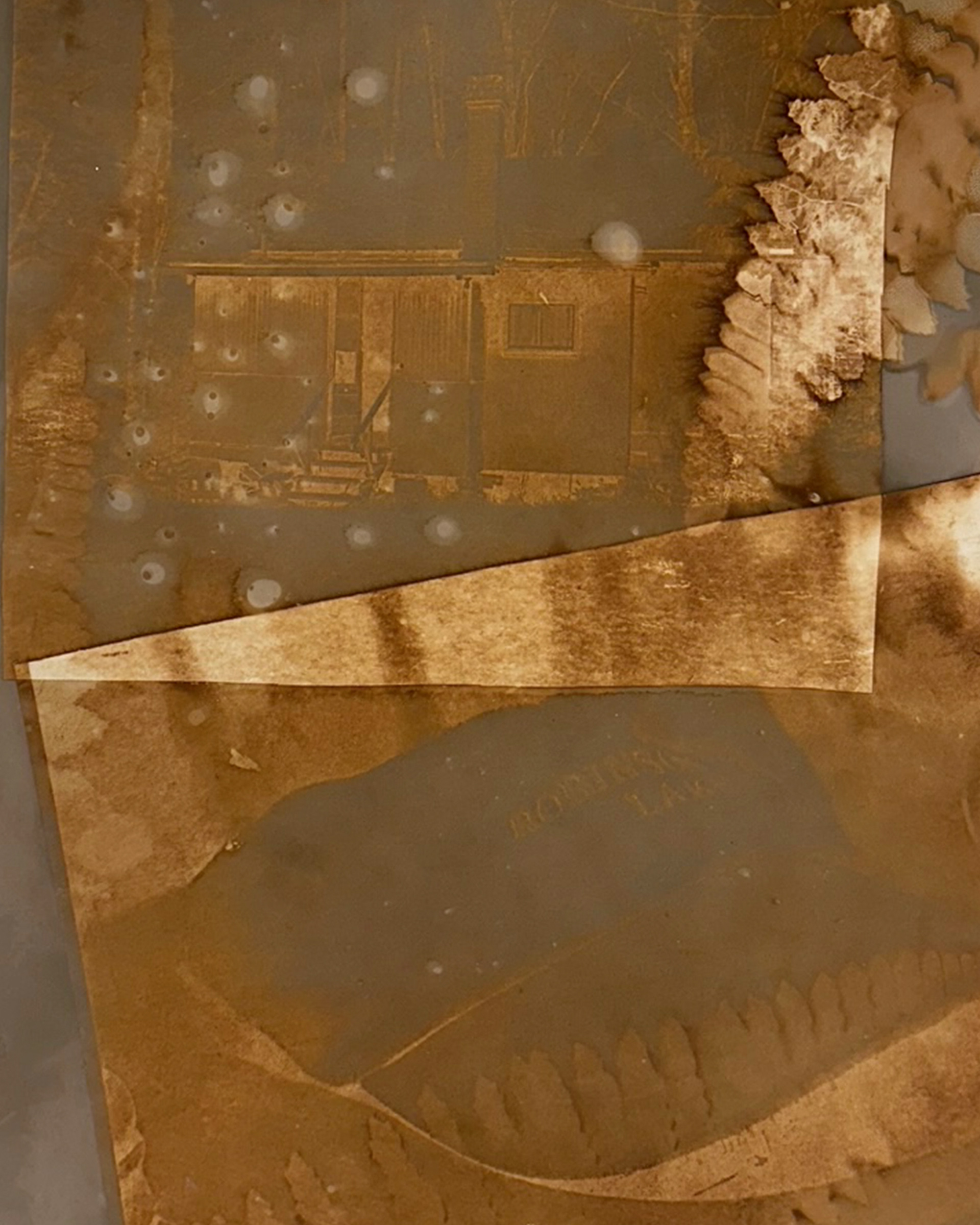
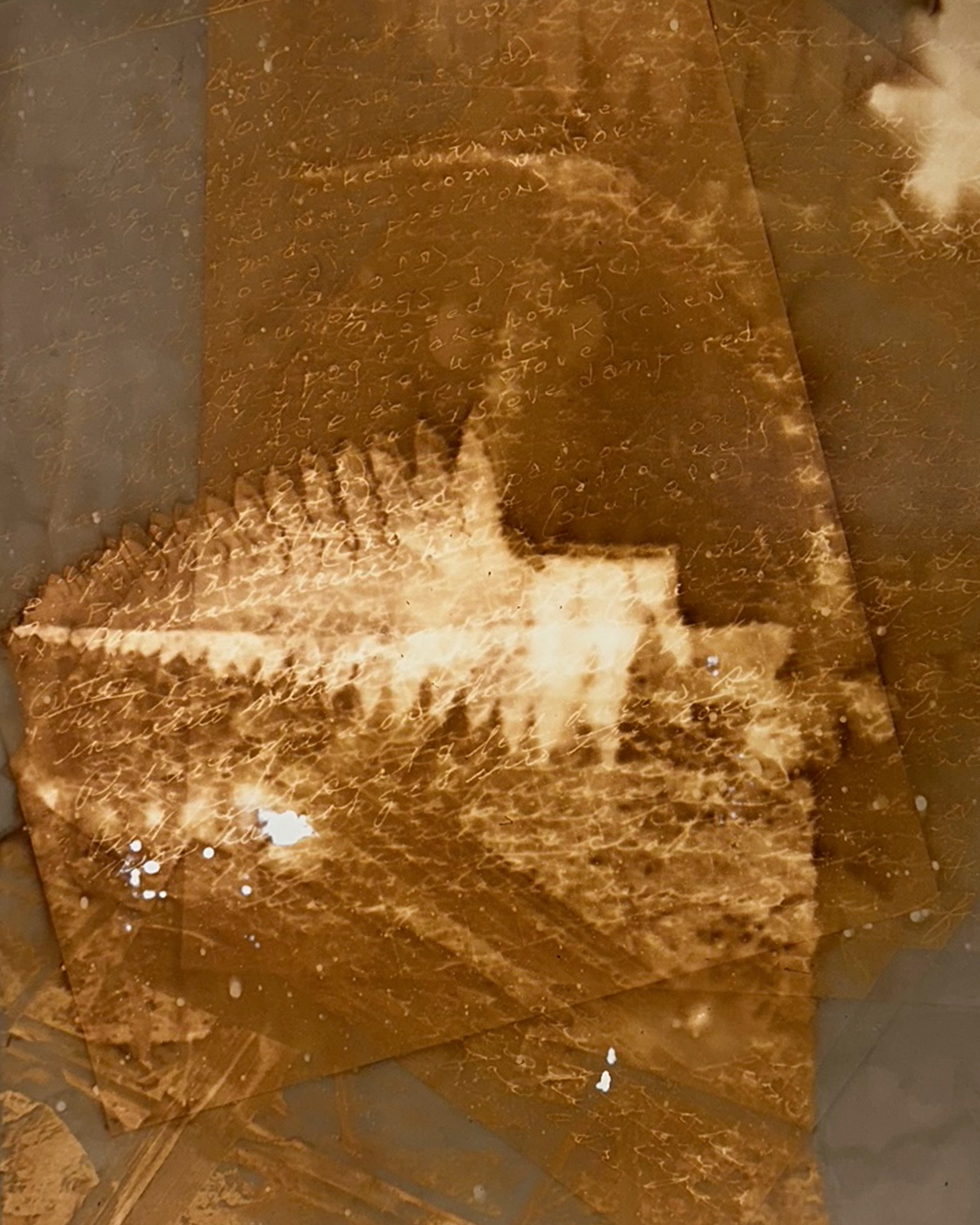
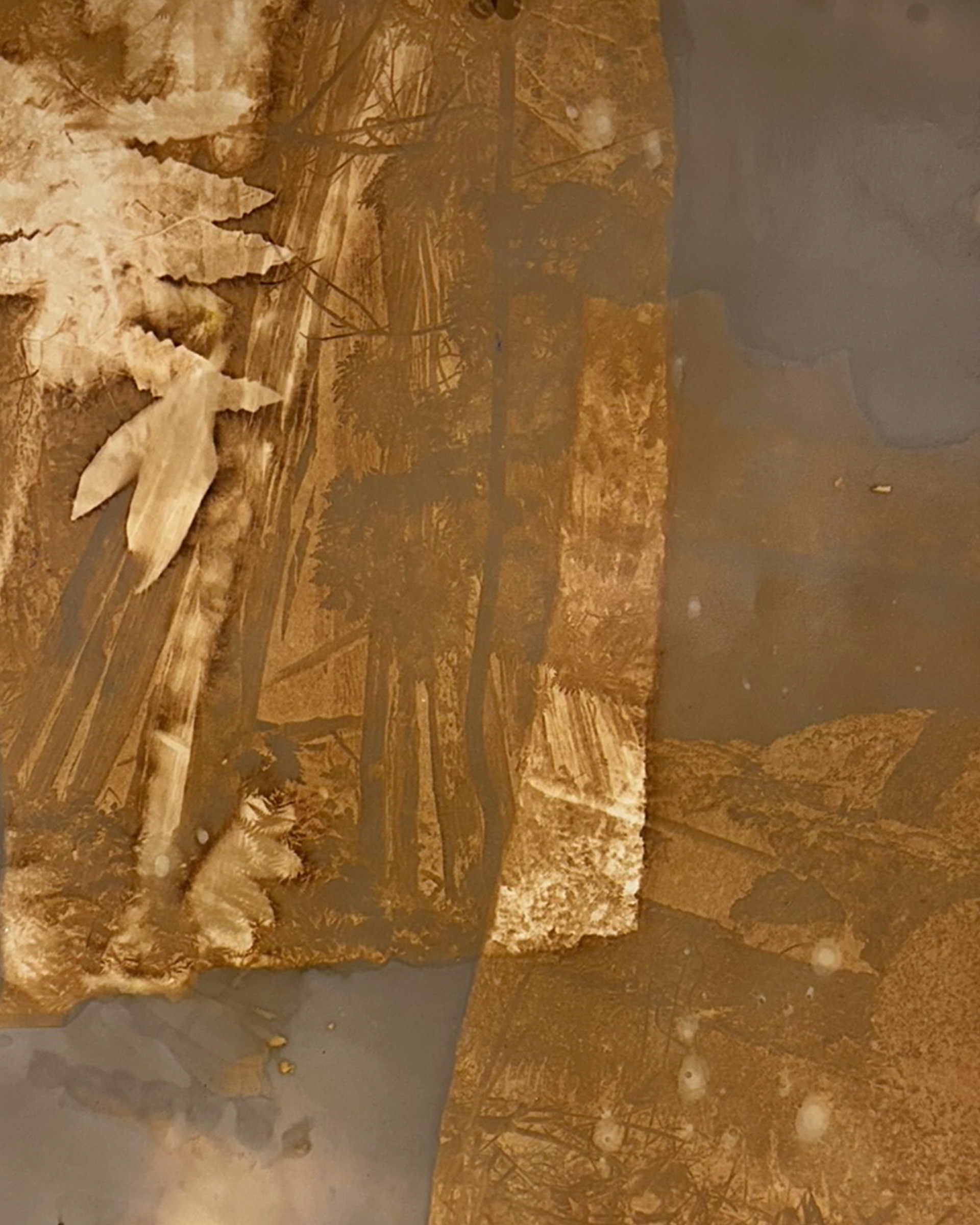
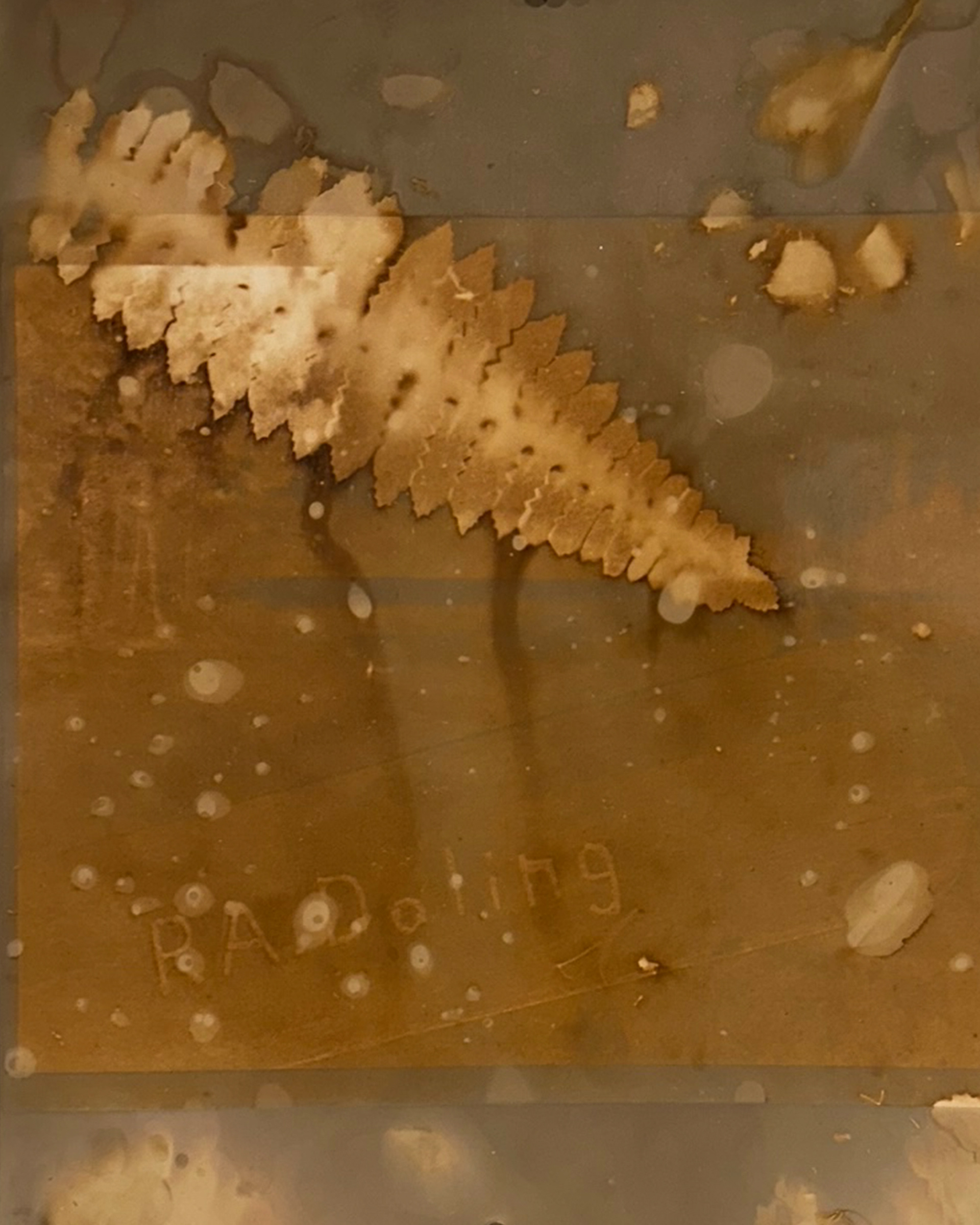
Ephemeral Beauty of the Family Cottage (2024)
Date: May 2024
Medium: Photography (Lumen Prints)
Tools Used: Photo contact paper, digital photographic prints, natural materials (leaves, flowers, artifacts), sunlight exposure, film processing lab
Exhibition: York University Media Showcase (May 2025)
Medium: Photography (Lumen Prints)
Tools Used: Photo contact paper, digital photographic prints, natural materials (leaves, flowers, artifacts), sunlight exposure, film processing lab
Exhibition: York University Media Showcase (May 2025)
Overview
Ephemeral Beauty of the Family Cottage is an experimental photographic series that explores memory, impermanence, and familial legacy through the alternative process of lumen printing. By layering archival digital photographs of the family cottage with organic materials found on-site, the prints capture a dialogue between past and present. The exposure process, influenced by natural elements like sunlight and decay, emphasizes the transient nature of place, time, and remembrance.
Concept & Inspiration
✅ What inspired this project?
This project was inspired by the fleeting nature of memory and the physical traces left behind by time. The family cottage, a space rich with personal and generational history, became both subject and medium, blurring the line between photographic documentation and material memory.
✅ What themes, emotions, or messages does it explore?
Ephemerality & Memory – Just as the cottage itself has weathered over time, these lumen prints exist as fragile, impermanent records.
Nature & Time as Co-Creators – The exposure process embraces unpredictability, allowing sunlight, leaves, and artifacts to shape the final image.
Absence & Presence – The layered compositions reflect the lingering presence of a place even as it fades from reality.
✅ Are there artistic, cultural, or theoretical influences?
This project is influenced by:
Susan Derges – Her camera-less printing methods inform my approach to working with light, natural processes, and ephemeral imagery.
Roland Barthes' concept of photography as an imprint of loss – The lumen prints act as traces of a past that no longer exists in its original form.
Process (Step-by-Step Breakdown)
Selection of Digital Photographs – Archival images of the family cottage and its surroundings were printed on printer Paper, arranged on RC Contact paper and sprayed with water.
Composition & Arrangement – Found objects from the site—leaves, flowers, small artifacts—were arranged over the contact paper along with printed images.
Sunlight Exposure – The compositions were placed outdoors on the lawn for extended exposure, allowing light and organic materials to interact with the paper.
Development in Film Lab – The exposed papers were processed, revealing ghostly imprints of both photographic history and natural decomposition.
Final Curation & Display – The most evocative prints were selected based on texture, depth, and their ability to convey the theme of impermanence.
Here are process images of exposure and development
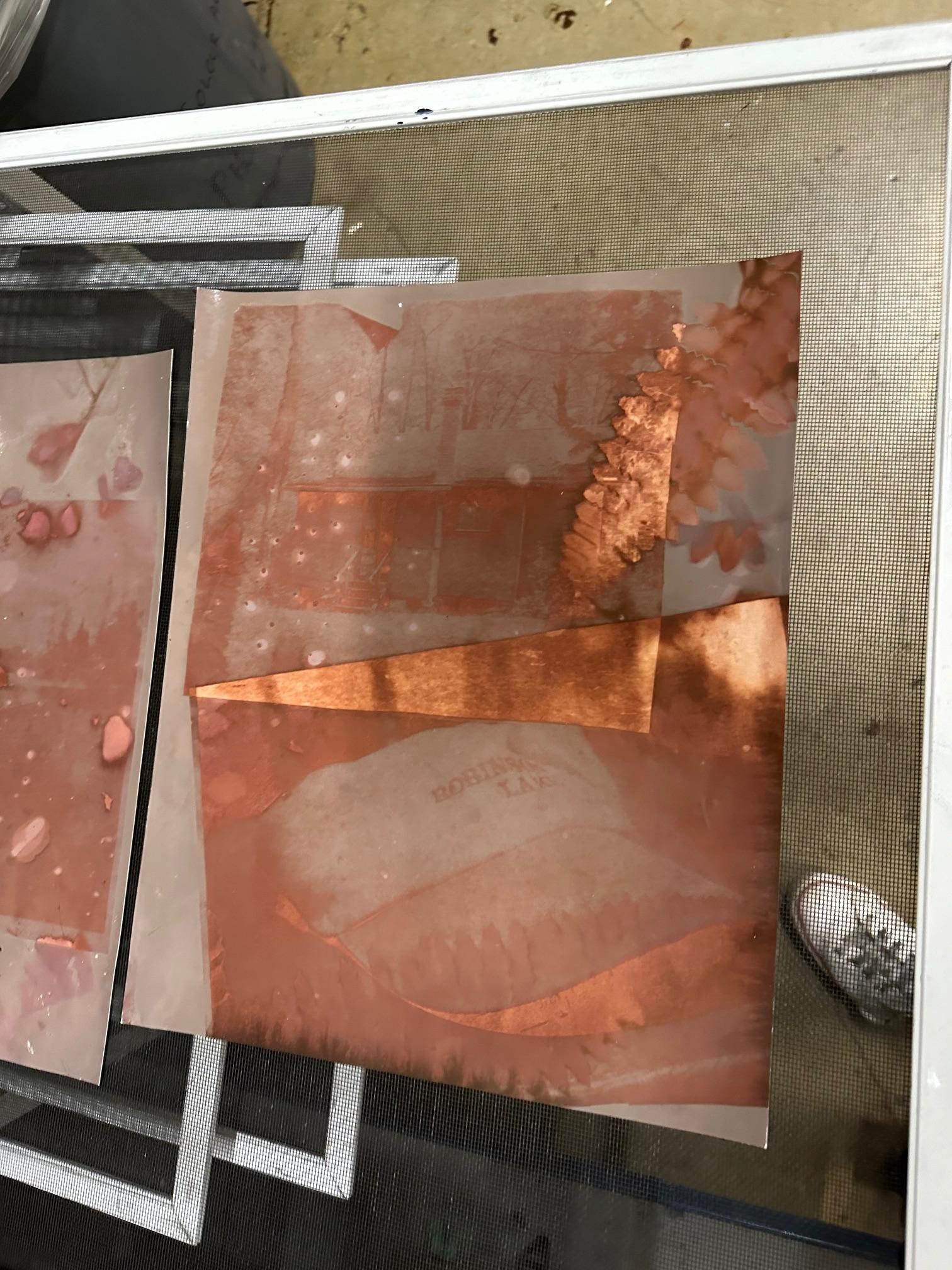
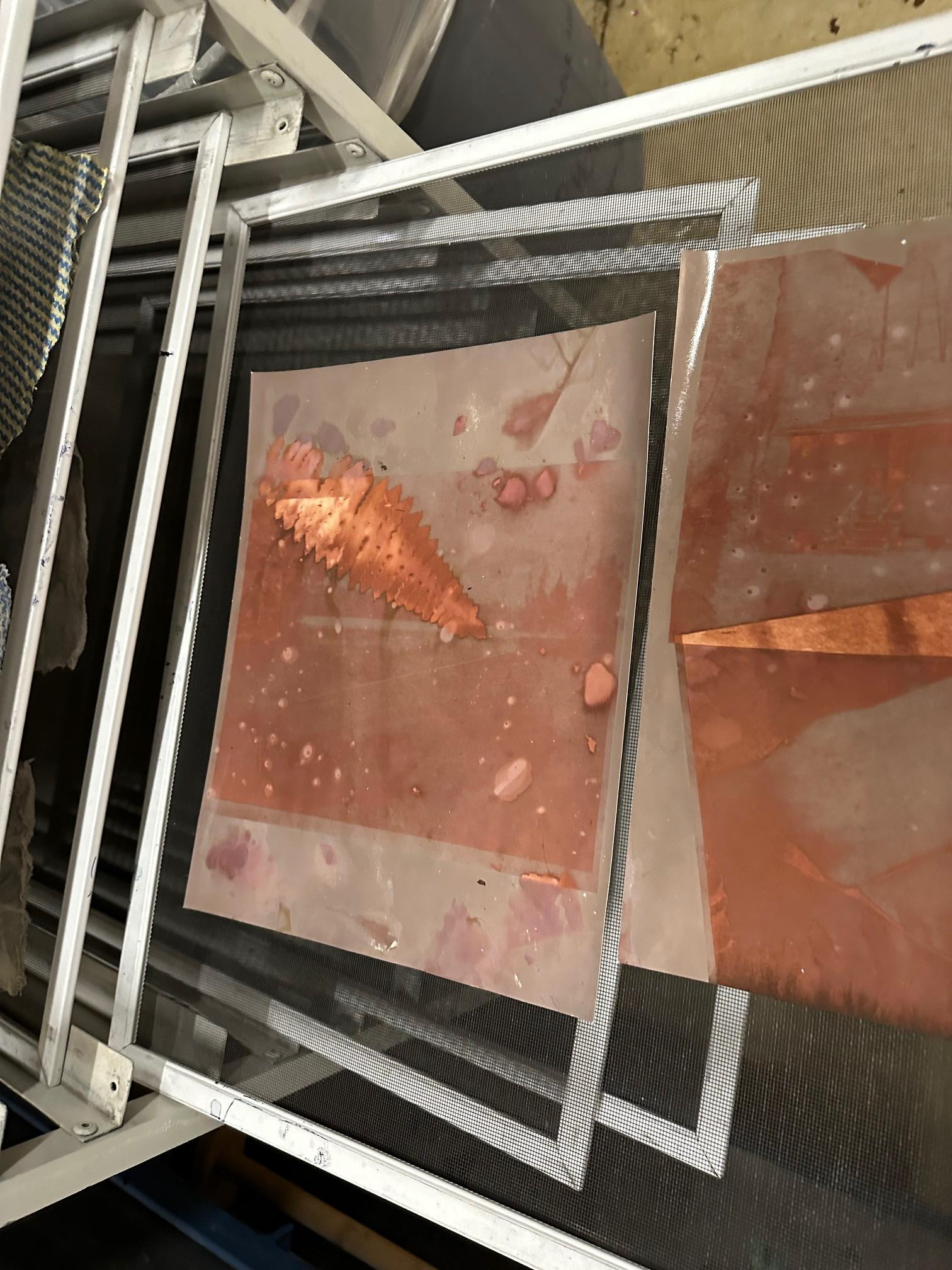
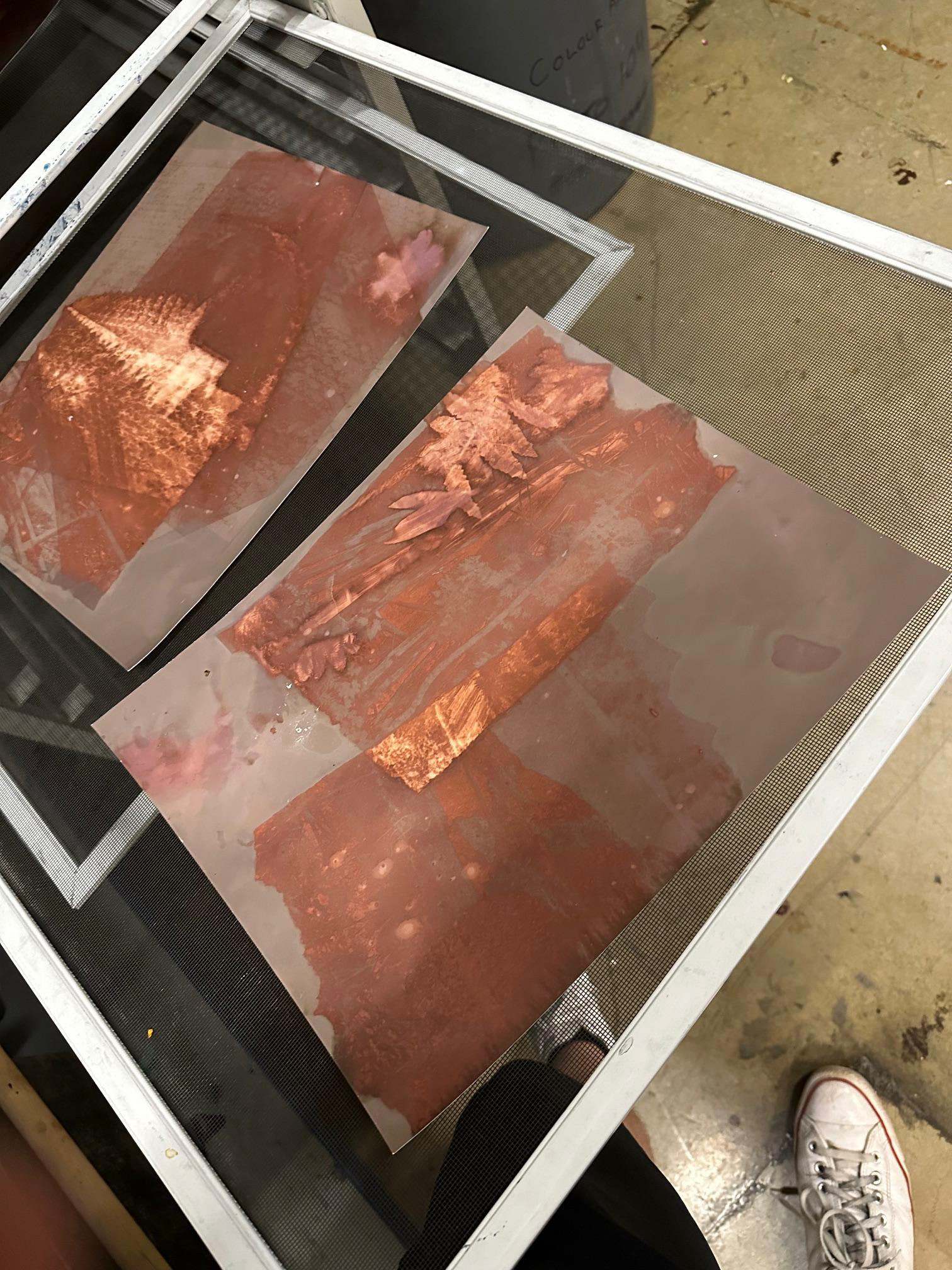
Role & Collaboration
This was a solo project, conceptualized and executed independently. However, peer critique sessions provided insights into refining the final selection and exhibition display.
Reception & Exhibition
✅ Where was the work showcased?
This project was exhibited at the York University Media Showcase in May 2025.
✅ What was the response from viewers?
Attendees noted the intimate, haunting quality of the lumen prints, describing them as both archival and decaying—mirroring the way memory itself shifts over time. The text imprints and organic layering were particularly well received, sparking discussions on the intersection of photography, nature, and personal history.
✅ Awards, Press, or Engagement?
The installation was featured prominently at the York University Visual Arts Open House (March 2024), inviting viewers to explore and reflect on the themes of memory and family heritage. Audience members interacted closely with the prints, sharing personal interpretations and emotional connections to the work.
Media Gallery
Final Lumen Prints – See Gallery at top of page
Reflection & Next Steps
✅ What did you learn from this project?
This project reinforced how alternative photographic techniques can mirror the impermanence of memory and place. It also deepened my exploration of site-specific materials as active participants in image-making.
✅ What would you improve or change if you revisited it?
Experimenting with different exposure durations to compare effects.
Using a broader range of organic materials to explore different textures.
Expanding the project into a multimedia experience, incorporating sound recordings or written narratives from the cottage.
